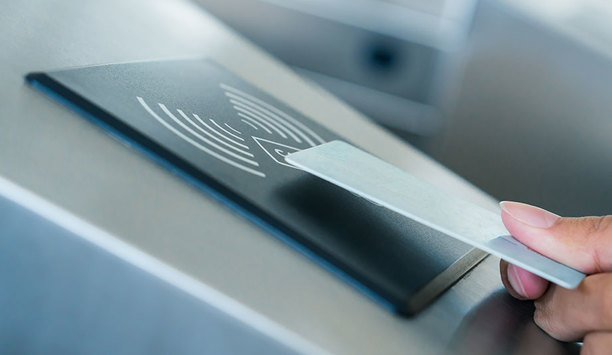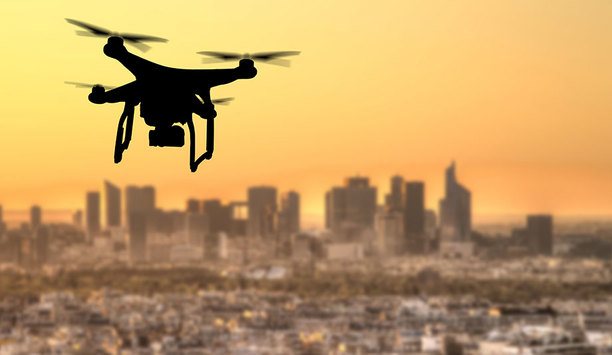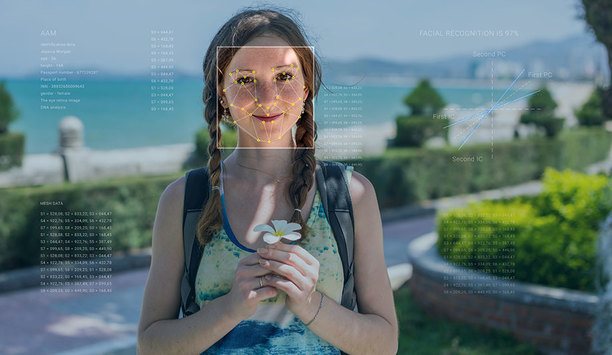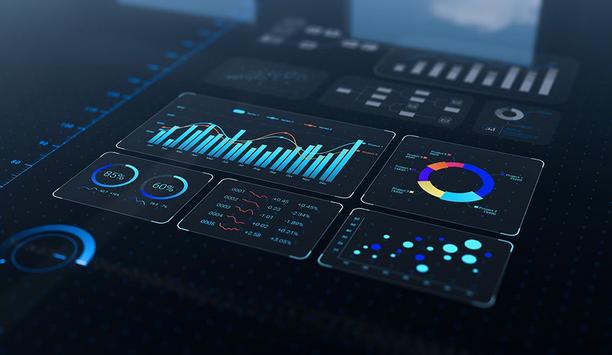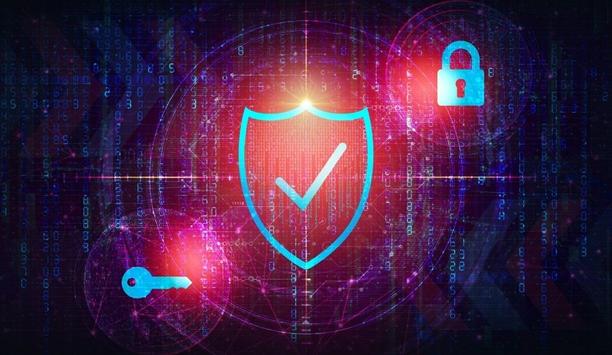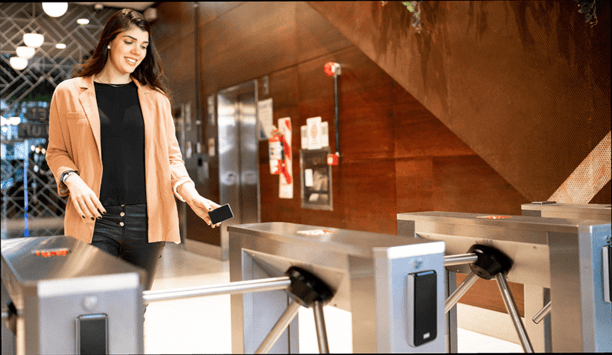Network / IP security - Expert commentary
Edward Snowden’s name entered the cultural lexicon in 2013, after he leaked thousands of classified National Security Agency documents to journalists. He’s been variously called a traitor, a patriot, a revolutionary, a dissident and a whistleblower, but however you personally feel about him, there’s one way to categorise him that no one can dispute: He’s a thief. There’s no doubt about it: Snowden’s information didn’t belong to him, and the scary truth...
Video surveillance equipment vendors report their 2018 revenue data to IHS Markit in the first quarter of 2019, which is when we calculate the rate the professional video surveillance market grew in 2018. However, we expect this rate will have been around 10 percent globally -- slightly higher than the 9.3 percent growth in 2017 and much higher than the 3.9 percent growth in 2016. Changing market trends Despite this healthy rate of growth, 2018 was not without its challenges and surprises. Cha...
We’re here again. The end of another calendar year, and a time when many organisations are assessing their performance over the past 12 months and finalising strategic plans for 2019. Taking time to reflect on where our industry is at – and what’s likely to happen in the future – is important for all organisations as they set out their long-term goals and tactics. Here are some of the key trends to watch in the months to come and some predictions on their potential to i...
It amazes me how in a few short years security systems have gone from simple, dumb cameras witnessing events to intelligent eyes, ears, speech and touch solutions that boost situational awareness far beyond human capabilities. It seems the only senses missing from the equation now are smell and taste. And who knows, someone might be working on those in a lab somewhere right now. But what’s really fascinating to me is how the Internet of Things (IoT) has opened a world of possibilities for...
Timely and important issues in the security marketplace dominated our list of most-clicked-upon articles in 2018. Looking back at the top articles of the year provides a decent summary of how our industry evolved this year, and even offers clues to where we’re headed in 2019. In the world of digital publishing, it’s easy to know what content resonates with the security market: Our readers tell us with their actions; i.e., where they click. Let’s look back at the Top 10 article...
The security marketplace is talking about a lot of different subjects. Our website’s Expert Panel Roundtable discussions in 2018 reflected some of the “hot topics” in the industry. The very most-clicked-on Expert Panel Roundtable discussion in 2018 was about privacy issues and GDPR’s impact on physical security systems. Other hot topics that made the Top-10 list of roundtable discussions included obstacles to adoption of mobile credentials, what’s new “...
In the wake of 9/11, the Federal Government’s secure-the-fort, big idea was to create an identity credential for all federal employees and contractors. Homeland Security Presidential Directive (HSPD)-12 set it all in motion. Today, we know the smartcard-based credential that arose from HSPD-12 as the Personal Identity Verification (PIV) card. The PIV card is meant to give employees/contractors physical access to federal facilities and logical access to federal information systems. While u...
As the world continues to become more connected, it’s becoming increasingly important to adjust security and safety procedures in the workplace. But today’s ever-evolving office environment can present unique safety and preparedness challenges. No two businesses are exactly alike, with some located in numerous buildings or spread out across campuses, while others have employees that frequently journey from different locations, work remotely or travel internationally. With this shif...
Terry Gold of D6 Research has been giving “cyber in physical security” presentations at a variety of conferences, including ISC West and the Cyber:Secured Forum. We caught up with him for some insights about the intersection of cybersecurity and physical security. Q: Tell us a little bit about your background, specifically in the context of its relevance to cyber security in physical access. Gold: I started out in information security and then got involved in physical security al...
As buildings become more complex and smarter, the age-old traditional maintenance methods that are based mostly on hands-on human monitoring are becoming more and more inadequate. Instead, the world is fast adopting building automation as a key component of smarter and more proactive maintenance strategies. The aim is to free up maintenance staff and give them time to focus on other tasks while machines monitor the different systems that work together to make the facility functional. Specific...
Today, more and more video security cameras are increasingly connected to the internet and transitioning into intelligent sensors that collect significantly more data than video security images alone. However, as this level of connectivity and collection of business-sensitive data becomes more widespread, the threat from cybercrime also rises. This is clearly an issue that affects everyone. After all, nobody is immune from cybercrime, not even the experts, which raises the question: What is the...
The basic principles of access control are well established: only authorised people should have access to secure areas, only at times that can be defined in advance, and only within a system that can identify exactly who went where, and when. Traditional mechanical lock-and-key systems cannot accomplish this — at least, not without loading a huge admin burden onto security staff. But modern, electronic wireless access control has the flexibility to achieve it. What criteria determine the...
The term Internet of Things (IoT) has almost been beaten to death at this point, as more and more security integrators, manufacturers and customers take advantage of the ability to increase connectivity between devices (and therefore take on the dangers this introduces). But the methods by which we interact with the IoT and protect its devices are still catching up, which means security manufacturers must take part in shifting their focus toward safeguarding data, engaging in vulnerability test...
Today, customers are demanding immediacy, personalisation and seamless services from their providers and our desire for instant gratification means that those servicing the public need to provide easy, fast, smooth and continuous ways to meet customer expectations. This is where interactive kiosks can really help organisations to deliver a high level of service in an easy to use, automated way. In recent years, kiosks have fast gained popularity, not only because they enhance customer satisfac...
From satellite imagery to street views to indoor mapping, technology has disrupted our past world. This has left us dependent upon new ways to visualise large spaces. This new world has brought many benefits and risks. But what does that mean for the security professional or facility manager today and what technologies can be used to secure buildings and improve facility operations? A brief history of 3D technology Starting May 5, 2007 (inception 2001), Google rolled out Google Street View to...
Market dynamics are changing the U.S. residential security market, creating new business models that better appeal to the approximately 70% of households without a security system. Smart home adjacencies have helped revitalise the traditional security industry, and alternative approaches to systems and monitoring for the security industry are emerging, including a new batch of DIY systems. Growth in the residential security market and its position as the channel for smart home solutions have at...
In 1901 New York state made a pioneering regulation move and became the first US state to require automobile owners to register their vehicles. This marked the beginning of regulation on modern traffic, which - following decades of development - resulted in a multi-layer concept of regulation relating to vehicles and driver’s licenses, traffic signs and insurance mechanisms that we are all familiar with nowadays. While certain parallels can be drawn between the early days of cars and our...
Whether you are a veteran in the access control world or have never installed a card reader before, there are always ways to increase profits in the ever-evolving world of access control. The hope is that by considering a few key focal points, you can find ways to increase market share. Whether we are releasing an electronic lock through a simple intercom button or using biometric and multi-authentication based on a database; the tactics for bringing on more revenue is the same. Learning to focu...
Managing IT and data risk is a challenging job. When we outsource our IT, applications and data processing to third-parties more and more every day, managing that risk becomes almost impossible. No longer are our data and systems contained within an infrastructure that we have full control over. We now give vendors our data, and allow them to conduct operations on our behalf. The problem is, we don’t control their infrastructure, and we can never fully look under the hood to unders...
Video surveillance systems have proven to not only be a deterrent to crime, but are also now being used to collect data points to actually help detect abnormal behaviours which can alert authorities of potentially evolving situations. In either case, recorded video is critical for investigations to provide all but irrefutable evidence to prove or disprove that an incident took place and the identity of the individuals involved. Sounds like a pragmatic approach that’s quite simple in...
There are two types of people in the world as it relates to privacy. Those that care about their privacy and sadly, those that don't. This divide continues to be further separated with the constant flood of cyber security breaches that we hear about. We, as consumers, can no longer get a cheap hamburger without hearing that once again, the information we want to be kept secret, has been breached. The old phrase of "you can lead a horse to water but you cannot make him drink" rings true as we a...
There’s growing noise around smart homes and smarter security. You’ve probably heard it. But there is a place where access control and more have been smart for decades: the workplace. Home automation and IoT are still playing catch-up with the commercial sector. A new insights report from ASSA ABLOY and IFSEC Global — “The Smart Door Locks Report 2018” — measures just how fast consumer smart technology is running. According to a survey conducted for the repor...
When a child goes missing in a large, crowded mall, we have a panicking mom asking for help from the staff, at least a dozen cameras in the area, and assuming the child has gone missing for only 15 minutes, about 3 hours’ worth of video to look through to find the child. Typical security staff response would be to monitor the video wall while reviewing the footage and making a verbal announcement throughout the mall so the staff can keep an eye out for her. There is no telling how long it...
As we approach National Safe Schools Week (October 21-27), it is appropriate for a conversation to begin regarding establishing standards for K12 school security. Currently no standards exist for assisting schools navigate the complexity of understanding what they need, how much it will cost and how they will secure their learning environments. Security industry experts The Partner Alliance for Safer Schools (PASS) is one of the organisations at the forefront of establishing security standards...
In today’s market, efficient use of bandwidth and storage is an essential part of maintaining an effective video surveillance system. A video management system’s ability to provide analysis, real time event notifications and crucial image detail is only as a good as the speed and bandwidth of a surveillance network. In the physical security industry, H.264 is the video compression format used by most companies. Some companies also employ H.264 enhancements to compress areas of an im...
Governments and corporations face crisis events every day. An active shooter terrorises a campus. A cyber extortionist holds a city for ransom. A hurricane washes away a key manufacturing facility. Not all critical events rise to the level of these catastrophic emergencies, but a late or inadequate response to even a minor incident can put people, operations and reputations at risk. Effective response plan In 2015, for example, the City of Boston experienced several record-breaking snowstorms...
In 1973, a brilliant economist named E.F. Schumacher wrote a seminal book titled ‘Small Is Beautiful:’ taking an opposing stance to the emergence of globalisation and “bigger is better” industrialism. He described the advantages of smaller companies and smaller scales of production, highlighting the benefits of building our economies around the needs of communities, not corporations. In almost every industry or market that exists in the world today, you're like...
There’s a lot of excitement around artificial intelligence (AI) today – and rightly so. AI is shifting the modern landscape of security and surveillance and dramatically changing the way users interact with their security systems. But with all the talk of AI’s potential, you might be wondering: what problems does AI help solve today? The need for AI The fact is, today there are too many cameras and too much recorded video for security operators to keep pace with. On top of...
There are many aspects to consider when developing a retail security strategy, including loss prevention, physical security, asset protection, risk management, and IT. All these areas could be the responsibility of just a few people working to secure a handful of stores or each of these areas could be entirely separate departments, as is often the case for major retailers with locations throughout the country. Regardless of the size of the retailer, there are many different technologies that ca...
By now your organisation should know the drill. To keep your enterprise safe from unauthorised access you take the basic precautions: create strong passwords that are not re-used and are updated frequently, use updated anti-virus software, employ host and network-based intrusion detection and prevention, data encryption, etc. etc. However, complacency has no place in cybersecurity. Hackers are working round-the-clock to outwit your most ardent security professionals. Here are a few specific vu...
The ultimate guide to mastering key control
DownloadUsing artificial intelligence (AI) to automate physical security systems
DownloadA modern guide to data loss prevention
Download7 proven solutions for law enforcement key control and asset management
DownloadThe truth behind 9 mobile access myths
Download










